.png)
Grab your cup of chai or coffee and get ready to dive into a sector that quietly touches every Indian kitchen, every day—and is now stirring up a storm in the markets. We’re talking about India’s dairy industry—an unassuming behemoth hiding right in your fridge.
If you thought investing in dairy was all about cows and milk cans, it’s time to churn that thought again.
India: Dairy Powerhouse in the Making
India isn’t just the world’s largest producer of milk; it's also the largest consumer—contributing over 25% of global production. But here’s the catch: despite the dominance, India's per capita consumption of dairy is still way below global levels.
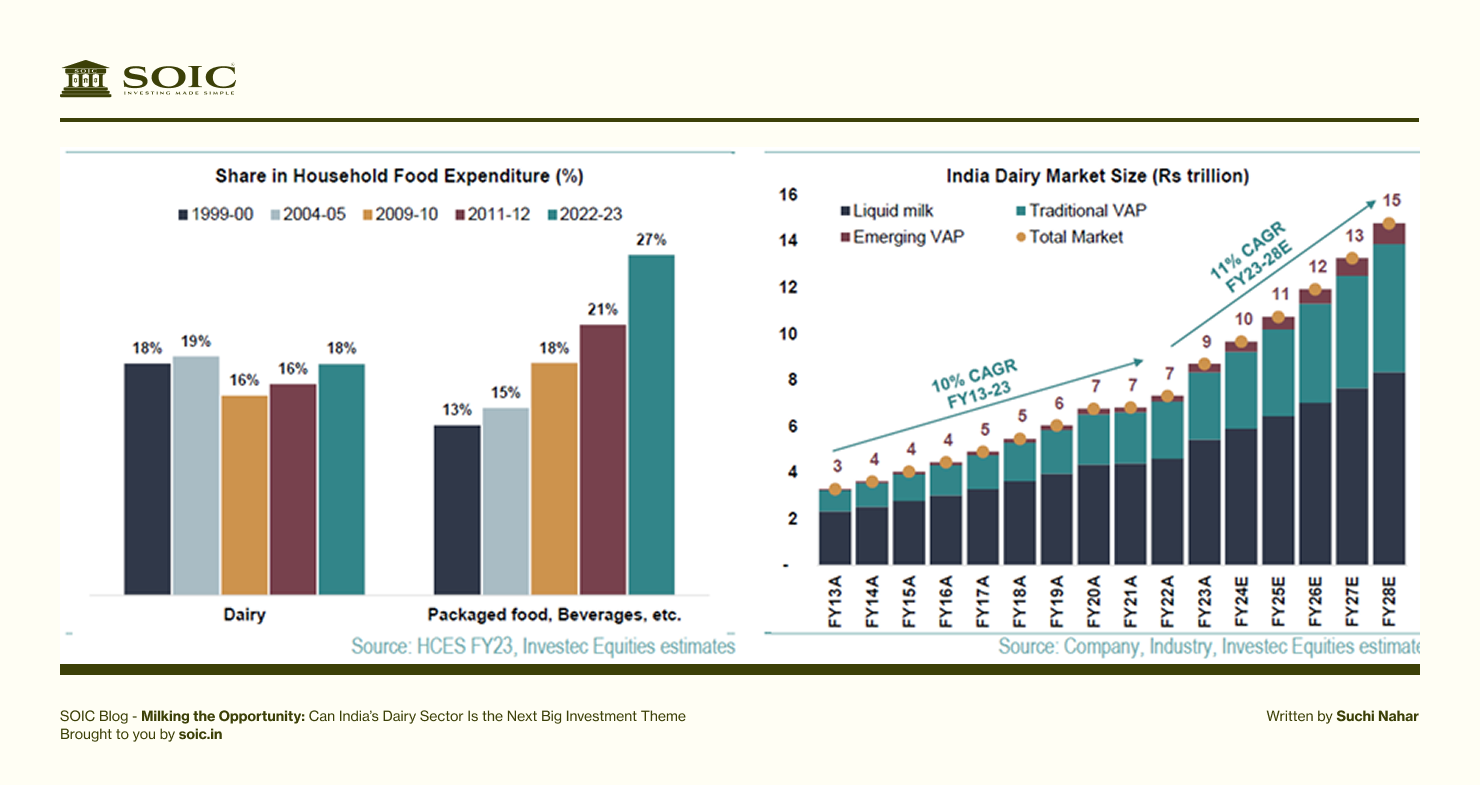
Translation? Massive headroom to grow and grow fast.
Households spend nearly 45% of their food budget on dairy and packaged foods—a figure that’s only expected to rise with the ongoing urbanization, rising incomes, and nuclear families hunting for convenience and nutrition.
From Chaos to Cream: A Sector Undergoing a Makeover
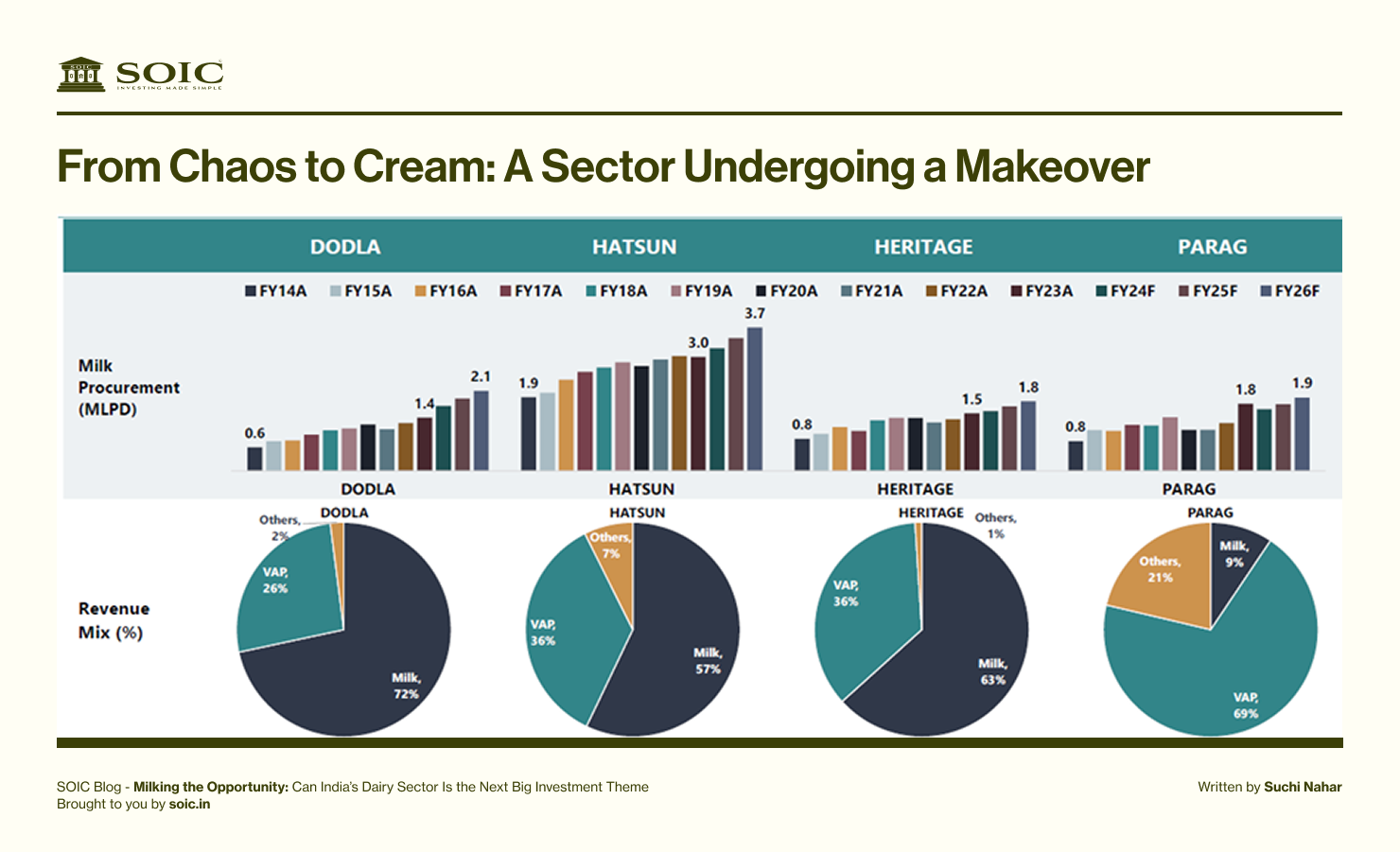
Historically, India’s dairy was a fragmented jungle of local milkmen and regional co-ops. But things are changing rapidly.
This isn't just an agri-story anymore—it’s a consumer play now.
Dodla, Heritage, Parag, Hatsun – Who’s the Cream of the Crop? it’s about capital efficiency, brand strength, and margin resilience. Here's how the major listed players stack up:
The headline takeaways
Dodla Dairy
Incorporated in the year 1995, Dodla Dairy Limited is an integrated dairy company based in Telangana. The company derives the majority of its revenue from the sale of Milk and dairy-based value added products in the branded consumer Market. Currently, its procurement is centered in 5 states and its products are available for purchase in 11 states. It has 94 milk chilling centers. Some of their plants are ISO 22000:2005 Certified while two are ISO 50001:2011 (EnMS) Certified.
Dodla Dairy — summary of management view
Management Comment
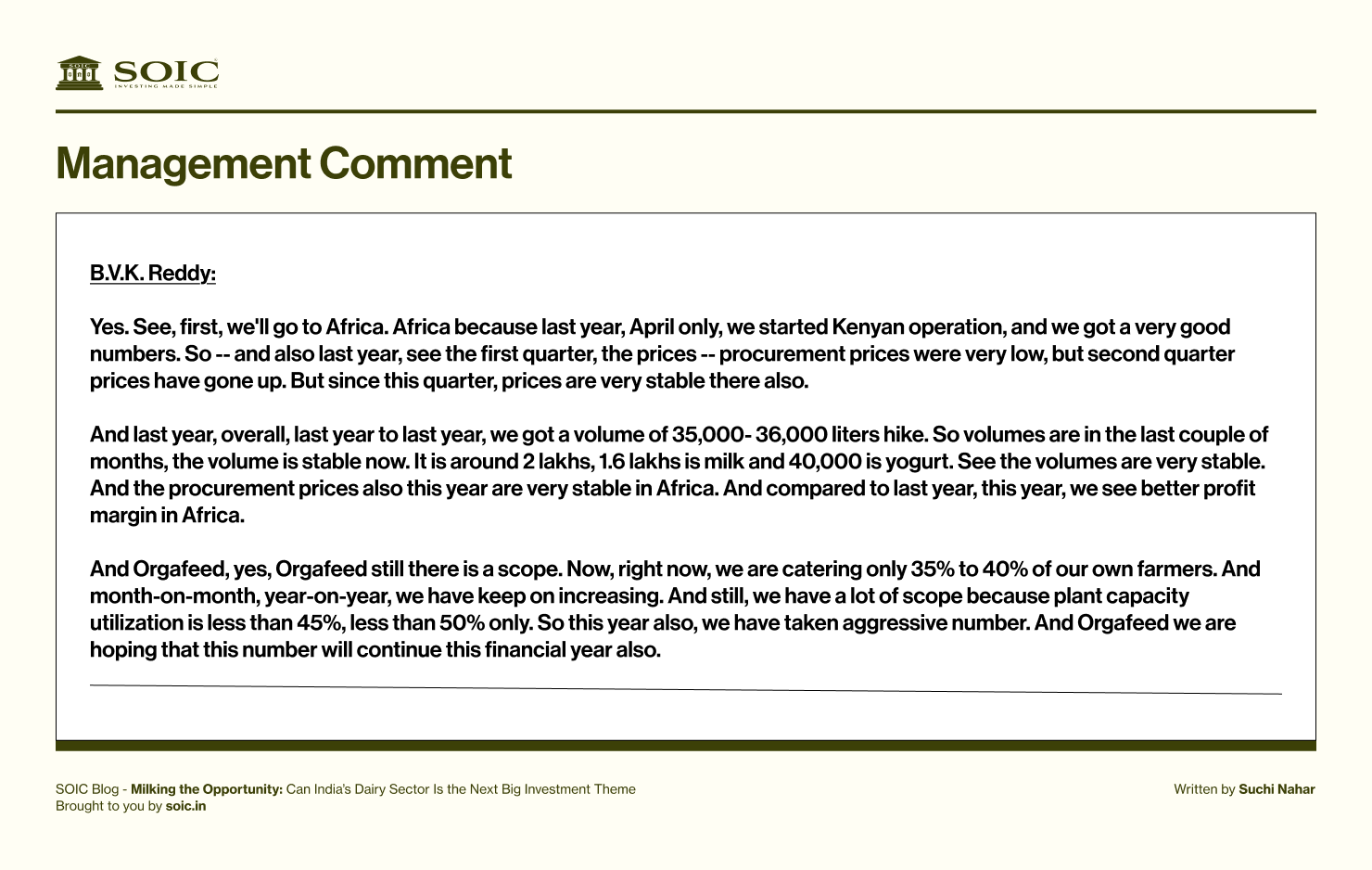
Heritage Foods – Efficient Underdog
HFL is one of the largest private dairy players in South India, with the capacity to process 2.78 million litres of milk per day. It has a wide product portfolio, with over 418 stock-keeping units. The company markets its products via distributors and their exclusive Heritage distribution centres and Heritage parlours.
Management views in the recent quarter:
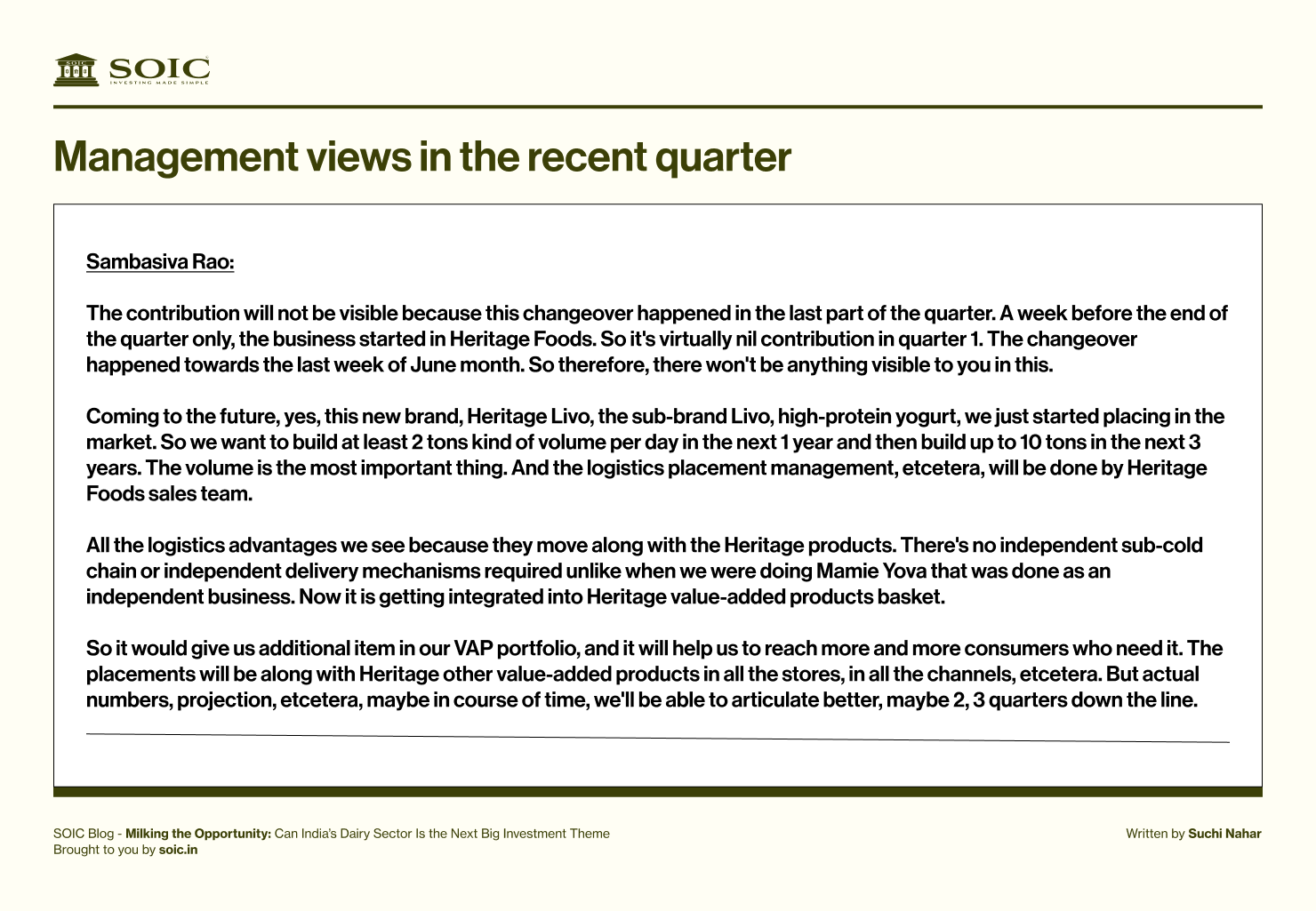
Heritage Foods — summary of management view
Parag Milk Foods
Parag Milk Foods Ltd, founded in 1992 by Mr. Devendra Shah is involved in the development and promotion of 100% fresh cow’s milk and milk products under international brand names with a diverse portfolio in over 10 product categories.
Summary of management view
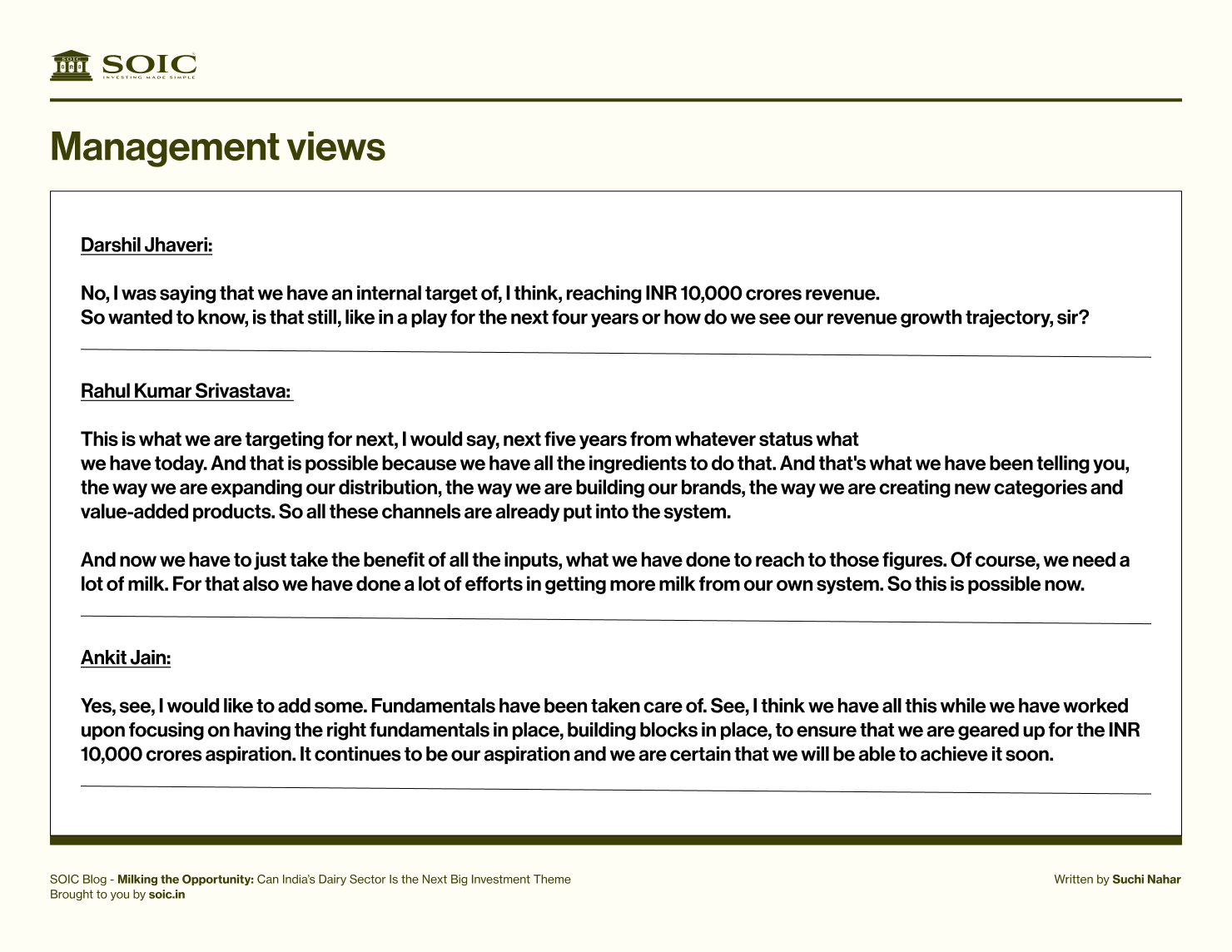
Hatsun Agro
Hatsun Agro Product Limited has been in business for over 5 decades and achieved the position of the largest private-sector industry in the Dairy sector manufacturing and marketing Milk and Milk products, Ice-Cream, etc. It was incorporated by Mr. R G Chandramogan, who has been in the dairy business for more than 30 years. Its journey began with Arun Icecreams.
In early 2025, Hatsun acquired regional dairy Milk Mantra for INR 233 crore (~US $28 m), aiming to strengthen presence in eastern India under the Milky Moo and Daily Moo brands.
This fits a broader strategy of regional consolidation, premium product positioning, and tapping into value-added and probiotic segments.
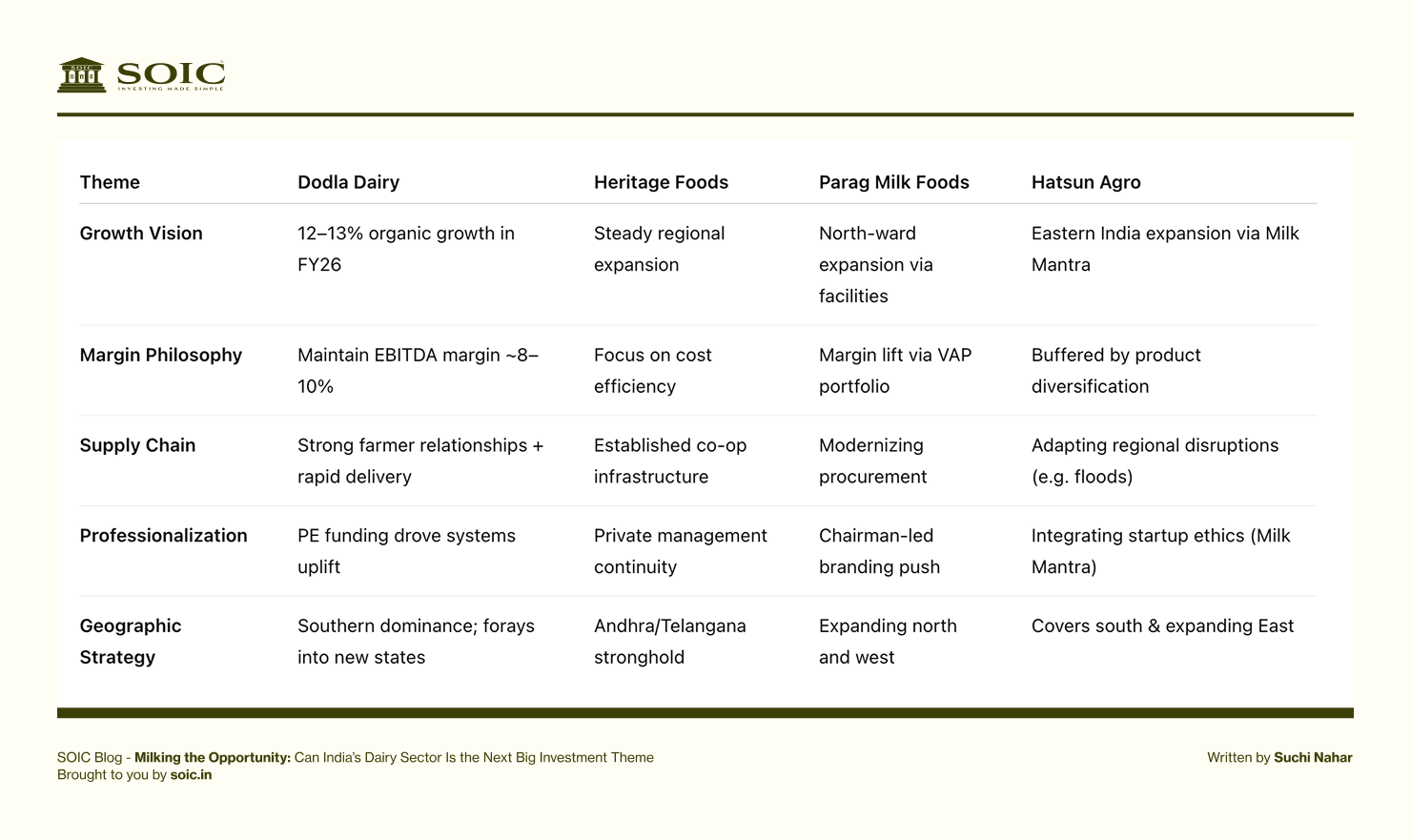
The Real Game-Changer: Value-Added Products (VAP)
While liquid milk still rules, the new-age consumer is biting into:
Companies are aligning their product mix with these high-margin, high-growth categories. Emerging VAPs are expected to grow at 20% CAGR till FY28.
What About Inflation & Milk Prices?
Yes, milk inflation did spook the sector during FY22–23. But here's the good news:
Expect margin normalization and double-digit earnings growth over FY24–26.
Key Success Ingredients for Dairy Players
Strong procurement network (think: farmer relationships + cold chains)
Efficient processing infrastructure
Smart distribution (especially for short-shelf-life products)
Balanced product mix (high-margin VAPs + fast-turnover milk)
Brand-building & premiumization
This Is Not Just Dairy, It’s Consumption 2.0
India’s dairy industry is morphing into a consumer-facing, branded, capital-efficient juggernaut.
If you believe in:
Then you're not just investing in milk—you’re investing in modern India’s eating habits.

Understanding the Dairy Value Chain in India
The Indian dairy value chain is a multi-stage process that transforms raw milk into a variety of consumable products while ensuring quality, efficiency, and profitability across stakeholders. Each stage of the chain—from milk production to retail distribution—adds distinct value and is critical to the final quality, safety, and accessibility of dairy products.
1. Milk Production (Farm Level Procurement)
This is the foundational stage of the value chain, where raw milk is produced, primarily by small and marginal farmers in rural India. Milk production is largely decentralized, with an estimated 75 million dairy farmers contributing to India's milk output. These farmers typically own 2–3 cattle each and rely on income from milk as a daily cash flow source.
Key components:
Private dairy players and cooperatives often work directly with farmers or through village-level milk procurement agents. In more advanced setups, companies provide input services like cattle feed, insurance, veterinary care, and breeding services to enhance productivity and loyalty.
2. Collection and Chilling
Once milk is extracted, it is transported to collection centers or bulk milk cooling units (BMCUs), usually located within 10–15 km of the farmer clusters. Maintaining the cold chain from this point onward is critical to preserving milk quality and preventing bacterial growth.
Key elements:
Companies like Dodla and Heritage have invested significantly in expanding their chilling infrastructure to ensure freshness and traceability.
3. Transportation and Logistics
Chilled raw milk is then transported via insulated tankers to central processing plants, which are often located in peri-urban or semi-rural locations. Efficient logistics at this stage minimizes transit time and ensures that milk reaches the plant within 24 hours of milking.
Key considerations:
This stage is often managed either in-house by large players like Hatsun Agro or through dedicated logistics partners.
4. Processing and Value Addition
At the processing plant, raw milk undergoes pasteurization, homogenization, and standardization depending on the end-product. From here, the milk is either packaged as fluid milk or further processed into value-added dairy products (VADPs).
The output splits into:
This is a critical value-creation stage. While liquid milk yields lower margins (~4–6%), VADPs generate higher margins (20–35%) and offer better shelf-life and brand differentiation.
5. Packaging and Storage
After processing, the products are packaged using food-grade materials under hygienic conditions. Packaging varies depending on the product (e.g., tetra packs for flavoured milk, vacuum-sealed pouches for cheese) and is designed to enhance shelf life and consumer appeal.
Key elements:
Brands like Parag Milk Foods focus on premium packaging to differentiate offerings such as Go Cheese and Pride of Cows.
6. Distribution and Logistics
Once packaged, dairy products are distributed via a combination of:
Maintaining cold chain integrity during transportation is vital, particularly for perishable items like curd, paneer, and yogurt. Larger players invest in refrigerated vehicles and warehousing infrastructure to maintain product quality.
7. Retail and Consumption
Products reach end-consumers through:
Consumer-facing activities—branding, marketing, trade promotions, pricing, and availability—are critical at this stage. Companies that establish brand trust and ensure consistent supply gain pricing power and loyalty.
8. Residual Processing and Exports
Any surplus milk is often converted into skimmed milk powder (SMP) and butter oil (ghee) for storage or export. These products provide companies with an inventory buffer and reduce seasonal volatility.
In years of high global demand, India also exports:
Export performance depends on international pricing cycles and trade policies.
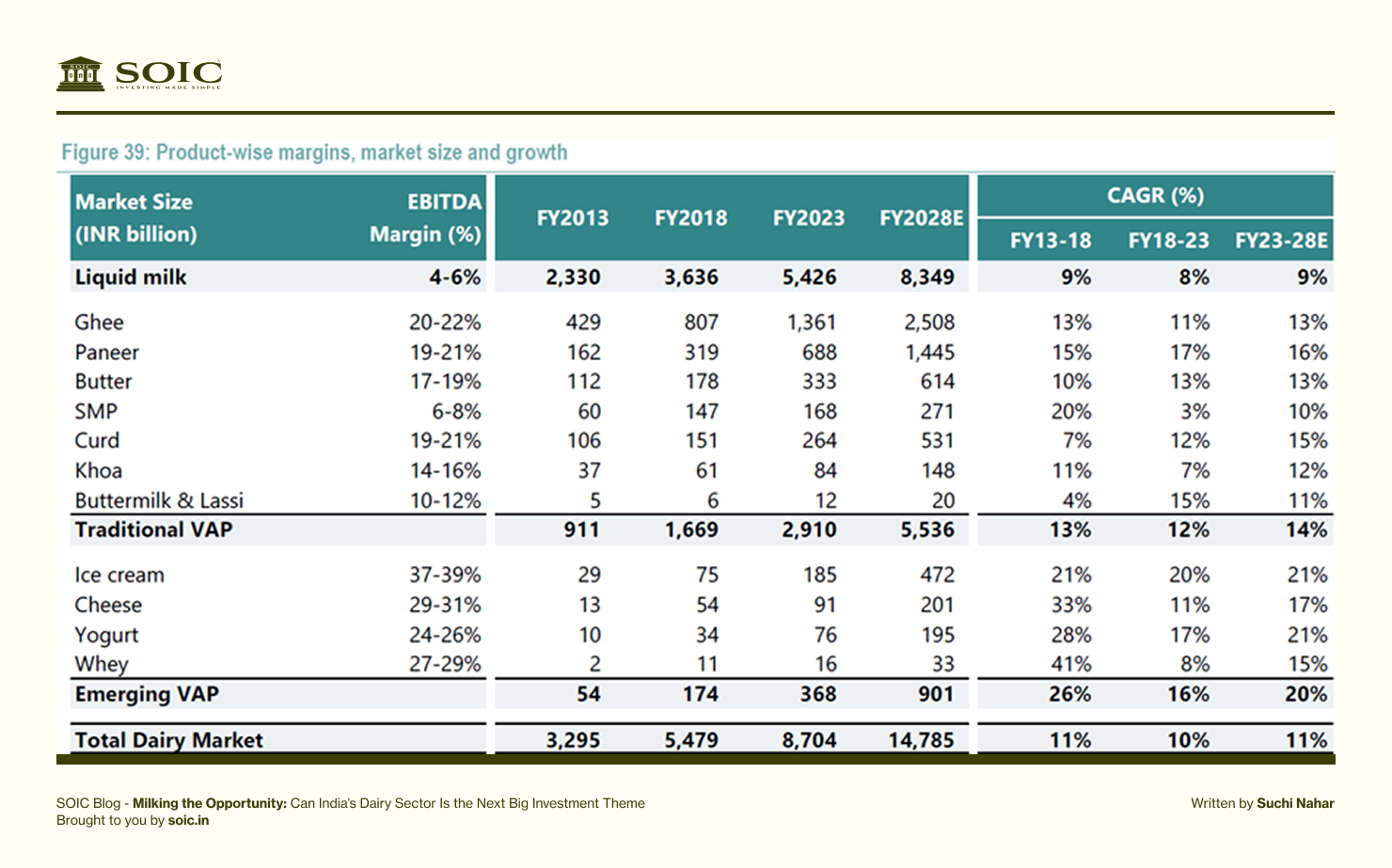
Summary of Value Chain Elements
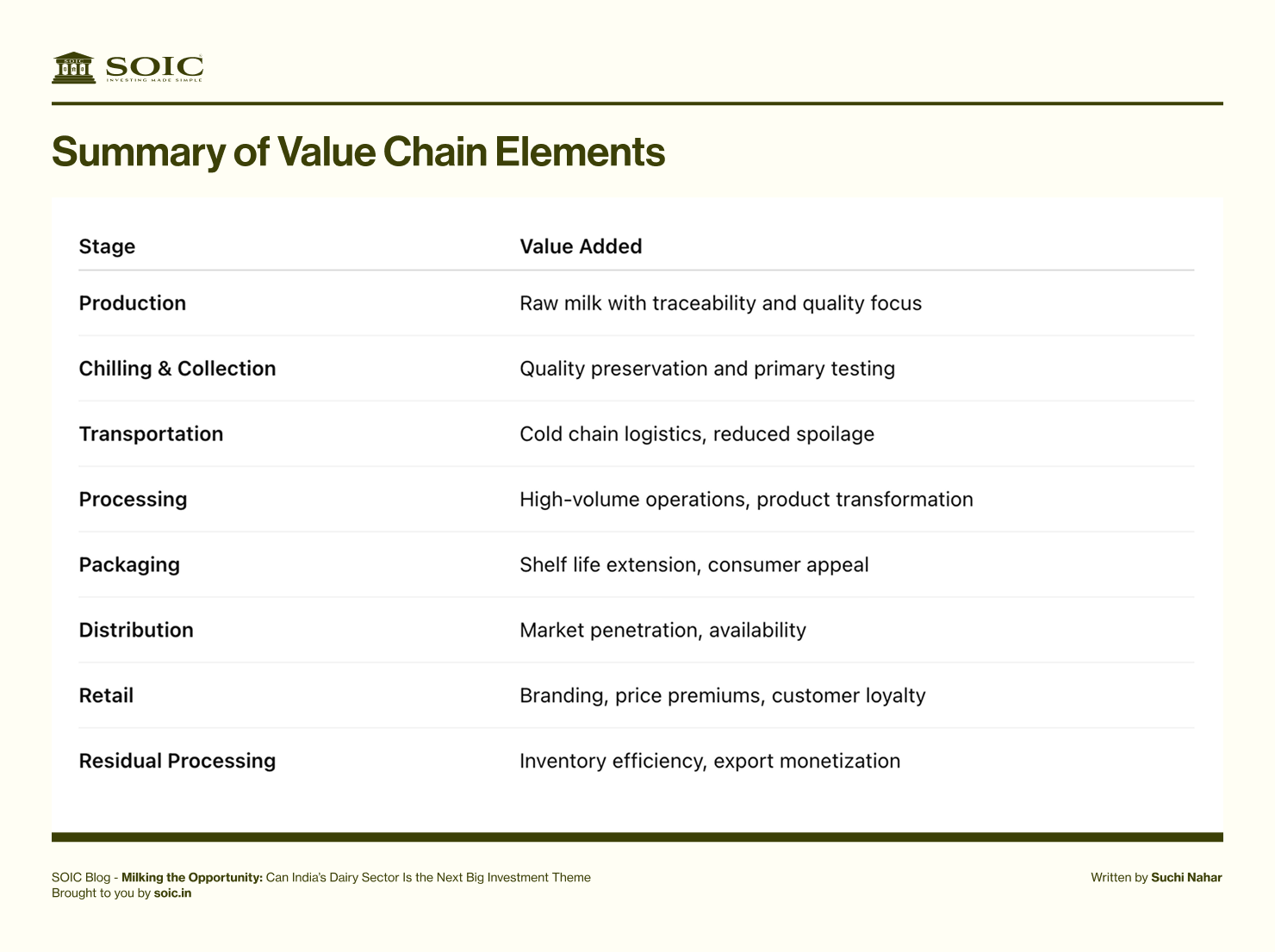
Management teams repeated several consistent messages:
KPIs to monitor
Operational:
Milk procurement price trends (state/region level) — monitor company disclosures & market reports.
Financial:
7. Gross margin trend (quarterly) — early warning for input pass-through or pricing power.
8. EBITDA margin and SG&A (% of sales) — marketing spends for premiumisation campaigns will increase SG&A in the short term; watch operating leverage.
9. Capex guidance and timeline for greenfield projects — Dodla Maharashtra, Heritage ice-cream.
10. M&A integration status and contribution (Dodla OSAM, Heritage Novandie).
Industry Risks:
The Indian dairy sector is no longer just about litres of milk—it’s a complex, evolving supply chain where branding, cold-chain reach, and value-added innovation are starting to matter as much as cattle yields and procurement prices. Management commentaries across the board suggest that the industry’s next chapter will be written at the intersection of traditional strengths and new-age categories like protein, functional nutrition, and premium single-origin dairy.
Whether these shifts translate into sustainable growth or simply reshape competitive dynamics will depend on execution, adaptability to weather and commodity cycles, and the ability to capture consumer trust at scale. For anyone tracking Indian consumption stories, the dairy industry offers a rare mix of defensiveness, seasonality, and innovation—well worth watching, if only to see which players turn everyday milk into enduring market leadership.
Link to our video: https://youtu.be/0i_mVwvtXuE?si=enKNWZ4DnBSd89CE
Disclaimer:
The information provided is for educational purposes only and should not be considered investment advice. As an educational organisation, our objective is to provide general knowledge and understanding of investment concepts. We are SEBI-registered research analysts.
It is recommended that you conduct your own research and analysis before making any investment decisions. We believe that investment decisions should be based on personal conviction and not borrowed from external sources. Therefore, we do not assume any liability or responsibility for any investment decisions made based on the information provided in this reference.
0 Comments